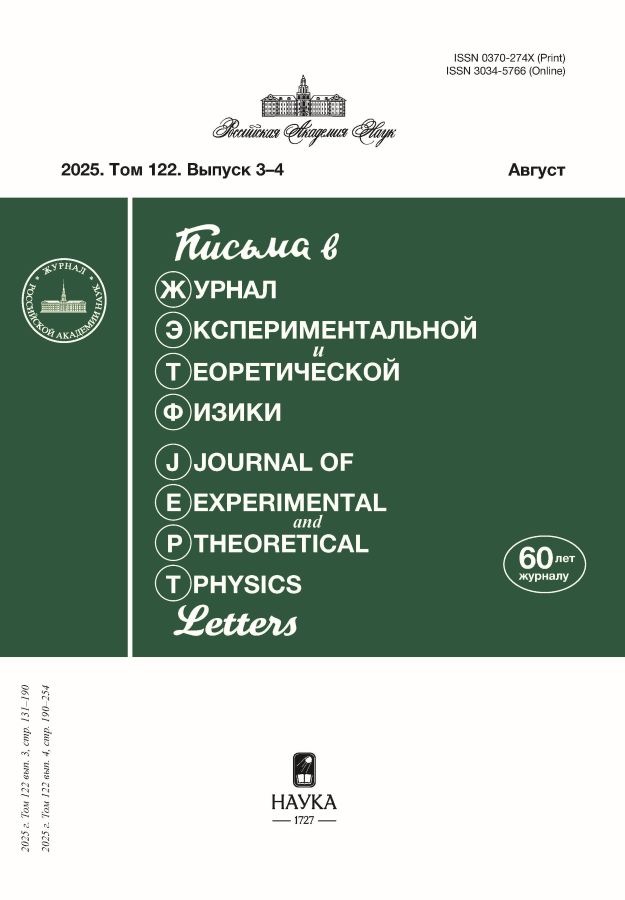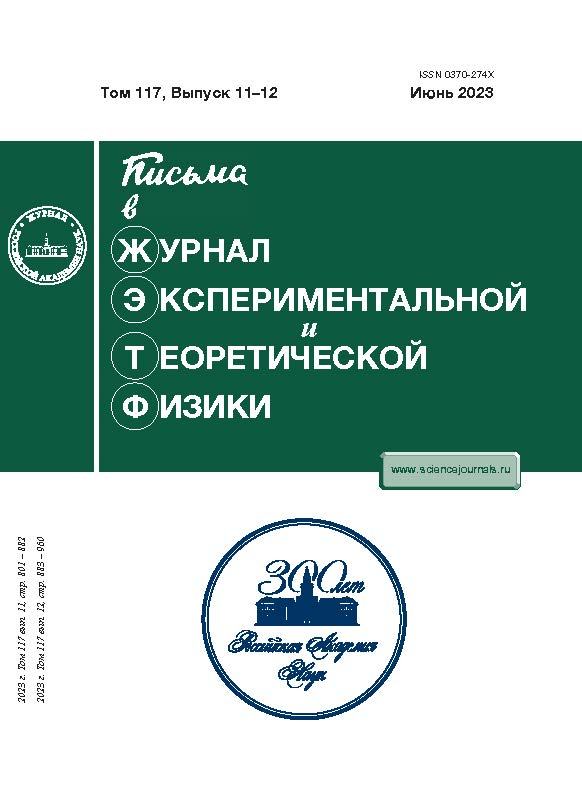Gluon Anomaly and the Violation of the Zweig Rule
- Authors: Osipov A.A1
-
Affiliations:
- Joint Institute for Nuclear Research, 141980, Dubna, Moscow region, Russia
- Issue: Vol 117, No 11-12 (6) (2023)
- Pages: 894-900
- Section: Articles
- URL: https://cardiosomatics.ru/0370-274X/article/view/663155
- DOI: https://doi.org/10.31857/S1234567823120042
- EDN: https://elibrary.ru/EVDGIS
- ID: 663155
Cite item
Abstract
It is well known that the gluon anomaly is responsible for the mass of the U(1) Goldstone boson. It is also manifested in the properties of pseudo-Goldstone states: the gluon anomaly in the next order of the 1/Nc expansion induces interactions violating the Zweig rule. A necessary condition for this is the explicit breaking of the chiral symmetry by the masses of light quarks. One of the physical consequences is that the η–η' mixing does not affect the
amplitude. Another consequence is the suppression of the first 1/Nc correction to the η–η' mixing angle. The mechanism of such suppression is discussed in detail. The conclusions are based on the 1/Nc expansion and the effective meson Lagrangian of the Nambu–Jona-Lasinio model and are compared with the results of the 1/Nc chiral perturbation theory.
About the authors
A. A Osipov
Joint Institute for Nuclear Research, 141980, Dubna, Moscow region, Russia
Author for correspondence.
Email: aaosipov@jinr.ru
References
- S. Weinberg, Phys. Rev. D 11, 3583 (1975).
- G. 't Hooft, Nucl. Phys. B 72, 461 (1974).
- E. Witten, Nucl. Phys. B 160, 57 (1979).
- H. Leutwyler, Phys. Lett. B 374, 163 (1996).
- H. Leutwyler, Phys. Lett. B 374, 181 (1996).
- R. Kaiser and H. Leutwyler, Eur. Phys. J. C 17, 623 (2000).
- P. Herrera-Sikl'ody, J. I. Latorre, P. Pascual, and J. Taron, Nucl. Phys. B 497, 345 (1997).
- A.A Osipov, JETP Lett. 115(6), 30 (2022).
- A.A. Osipov, JETP Lett. 115, 371 (2022).
- A.A. Osipov, arXiv:hep-ph/2302.14118 (2023).
- A.A. Osipov, arXiv:hep-ph/2303.01865 (2023).
- Y. Nambu and G. Jona-Lasinio, Phys. Rev. 122, 345 (1961).
- Y. Nambu and G. Jona-Lasinio, Phys. Rev. 124, 246 (1961).
- M.K. Volkov, ЭЧАЯ 17, 432 (1986).
- D. Ebert and H. Reinhardt, Nucl. Phys. B 271, 188 (1986).
- A.A. Osipov, JETP Lett. 113(6), 413 (2021).
- A.A. Osipov, Phys. Lett. B 817, 136300 (2021).
- A.A. Osipov, Phys. Rev. D 104(10), 105019 (2021).
- G. Veneziano, Nucl. Phys. B 159, 213 (1979).
- C. Rosenzweig, J. Schechter, and G. Trahern, Phys. Rev. D 21, 3388 (1980).
- P. Di Vecchia and G. Veneziano, Nucl. Phys. B 171, 253 (1980).
- P. Di Vecchia, F. Nicodemi, R. Pettorino, and G. Veneziano, Nucl. Phys. B 181, 318 (1981).
- G. Cvetic, Ann. Physics 255, 165 (1997).
- A. Manohar and H. Georgi, Nucl. Phys. B 234, 189 (1984).
- H. Leutwyler, Nucl. Phys. B (Proc. Suppl.) 64, 223 (1998).
- J. L. Goity, A.M. Bernstein, and B.R. Holstein, Phys. Rev. D 66, 076014 (2002).
- D. J. Gross, S.B. Treiman, and F. Wilczek, Phys. Rev. D 19, 2188 (1979).
- P. Kroll, Mod. Phys. Lett. A 20, 2667 (2005).
Supplementary files











